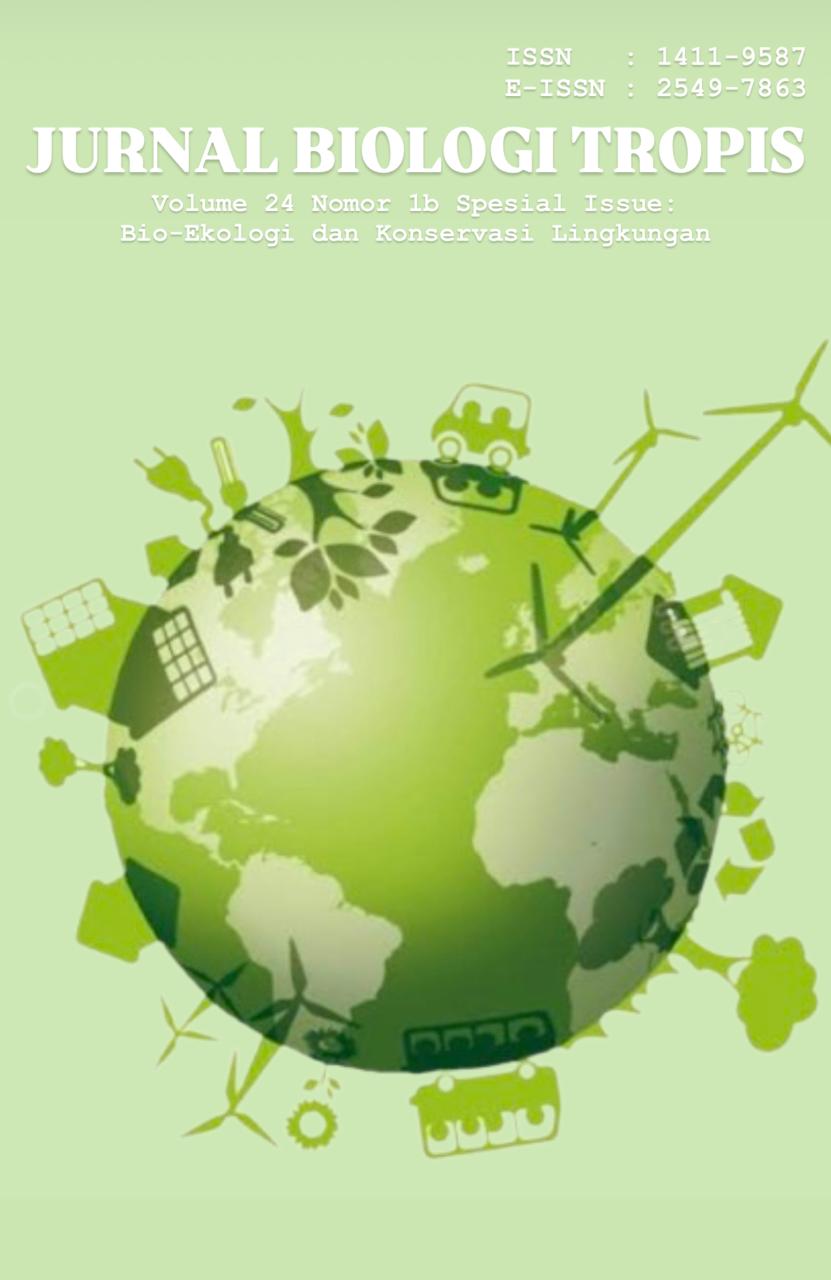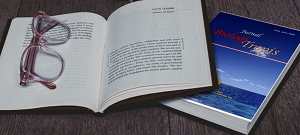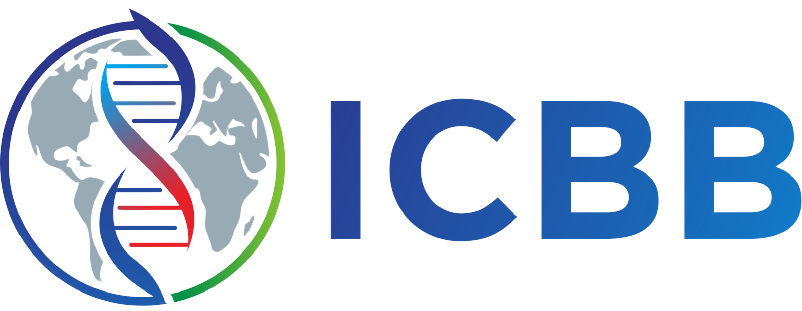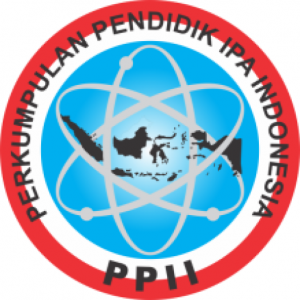Abundance and Distribution of Microplastics in the Waters of Koroe Onowa Village, Wakatobi Regency
Authors
Basriah Basriah , La Ode Alirman Afu , Emiyarti EmiyartiDOI:
10.29303/jbt.v24i2b.8320Published:
2024-12-30Issue:
Vol. 24 No. 2b (2024): Special IssueKeywords:
Abundance, distribution, Koroe Onowa, marine ecosystems, microplastics.Articles
Downloads
How to Cite
Downloads
Metrics
Abstract
The waters of Koroe Onowa Village, Wakatobi Regency, are at risk of plastic waste contamination due to human activities on land that are carried by currents into the waters. Plastic waste is very dangerous for the health of the aquatic environment, especially marine biota, because the accumulation of microplastics over a long period of time can interfere with the respiratory and digestive tracts of marine biota, and has the potential to harm human health. For this reason, research on microplastics in these waters is needed. This study aims to analyze the abundance and distribution of microplastics in the waters of Koroe Onowa Village. Microplastic sampling was carried out using a modified plankton net method, which was then identified based on the type of microplastic. The results of the study showed that there were four main types of microplastics identified, namely fragments, films, fibers, and pellets, with an abundance ranging from 3.2 to 8.86 particles per liter. Station III, which is a coastal tourism area with dense human activity, showed the highest abundance value, namely 8.86 particles/liter. The results of this study provide an initial overview of the threat of microplastic pollution in the waters of Koroe Onowa and form the basis for better monitoring and waste management efforts in the area, as well as the need for mitigation measures to protect marine ecosystems and ensure the sustainability of coastal resources.
References
Achoukhi, I., El Hammoudani, Y., Haboubi, K., Benaabidate, L., Bourjila, A., El Boudammoussi, M., Moudou, M., Faiz, H., Touzani, A., & Dimane. (2024) ‘Impact of microplastics on human health and aquatic species’, E3S Web of Conferences, 527 : 1–12. https://doi.org/10.1051/e3sconf/202452702001.
Andrady, A.L. (2011). Microplastics in the marine environment. Marine Pollution Bulletin, 62(8) :1596–1605. https://doi.org/10.1016/j.marpolbul.2011.05.030.
Barnes, D.K.A. Galgani, F., & . Thompson, R.C. & Barlaz, M. (2009). Accumulation and fragmentation of plastic debris in global environments. Philosophical Transactions of the Royal Society B: Biological Sciences, 364(1526) : 1985–1998. https://doi.org/10.1098/rstb.2008.0205.
Browne, M.A., Crump, P., Niven, S.J., Teuten, E., Tonkin, A., Galloway, T., & Thompson, R. (2011). Accumulation of microplastic on shorelines woldwide: Sources and sinks. Environmental Science and Technology, 45(21) : 9175–9179. https://doi.org/10.1021/es201811s.
Cole, M., Lindeque, P., Halsband, C., & Galloway, T.S. (2011). Microplastics as contaminants in the marine environment: A review. Marine Pollution Bulletin, 62(12) : 2588–2597. https://doi.org/10.1016/j.marpolbul.2011.09.025.
Cole, M., Webb, H., Lindeque, P.K., Fileman, E.S., Halsband, C., & Galloway, T,S. (2014). Isolation of microplastics in biota-rich seawater samples and marine organisms. Scientific Reports, 4 : 1–8. https://doi.org/10.1038/srep04528.
Cordova, M.R. (2017). Pencemaran Plastik Di Laut’, Oseana, 42(3) : 21–30. https://doi.org/10.14203/oseana.2017.
Egbeocha, C.O., Malek,S., Emenike, C.U., & Milow, P. (2018). Feasting on microplastics: ingestion by and effects on marine organisms, Aquatic Biology, 27 : 93–106. https://doi.org/10.3354/ab00701.
Fatimah, N. (2019) Komposisi dan kelimpahan makroplastik dan mikroplastik pada air di Muara Sungai Citarum, Kabupaten Bekasi, Provinsi Jawa Barat [skripsi].
Galloway, T.S., Cole, M. and Lewis, C. (2017) ‘Interactions of microplastic debris throughout the marine ecosystem’, Nature Ecology & Evolution, 1(5) : 116. https://doi.org/10.1038/s41559-017-0116.
Garrison, T. (2013). Oceanography: An Invitation to Marine Science. National Geographic Learning, Brooks/Cole, Cengage Learning.
Gregory, M.R. (1996). Plastic “scrubbers” in hand cleansers: a further (and minor) source for marine pollution identified. Marine Pollution Bulletin, 32(12) : 867–871. https://doi.org/10.1016/S0025-326X(96)00047-1.
Hanif, K.H., Suprijanto, J. and Pratikto, I. (2021) Identifikasi Mikroplastik di Muara Sungai Kendal, Kabupaten Kendal. Journal of Marine Research, 10(1) : 1–6. https://doi.org/10.14710/jmr.v9i2.26832.
Hidalgo-Ruz, V. Gutow, L., Thompson, R.C., Thiel, M. (2012). Microplastics in the marine environment: A review of the methods used for identification and quantification. Environmental Science and Technology, 46(6) : 3060–3075. https://doi.org/10.1021/es2031505.
Hiwari, H., Purba, N.P., Ihsan, Y.N., Yuliadi, L.P. S., & Mulyani, P.G. (2019). Kondisi sampah mikroplastik di permukaan air laut sekitar Kupang dan Rote, Provinsi Nusa Tenggara Timur. Masyarakat Biodiversitas Indonesia, 5(2) : 165–171. https://doi.org/10.13057/psnmbi/m050204.
Jiang, C., Yin, l., Wen, X., Du, C., Wu, L., Long, Y., Liu, Y., Ma, Y, Yin, Q., Zhou, Z & Pan, H. (2018). Microplastics in sediment and surface water of west dongting lake and south dongting lake: Abundance, source and composition. International Journal of Environmental Research and Public Health, 15(10). https://doi.org/10.3390/ijerph15102164.
Kane, I.A. Clare, M.A., Miramontes, E,, Wogelius, R., Rothwell, J.J., Garreau, P., & Pohl F (2020). Seafloor microplastic hotspots controlled by deep-sea circulation. Science, 368 (6495) : 1140–1145. https://doi.org/10.1126/science.aba5899.
Li, J.., Mao, X., Xing, R., Wang, Z., Sun, Q., & Liu, H. (2023). Microplastics Pollution and Their Potential Impact in Marine Systems: A Case Study in Shandong Peninsula, China. ACS Publications. Collection. https://doi.org/10.1021/acsestwater.3c00087
Li, J. (2024). A Study of the Effects of Microplastics on Microbial Communities in Marine Sediments. Highlights in Science, Engineering and Technology, 99 : 136–140. https://doi.org/10.54097/sak4d459.
Li, J., Liu, H. and Paul Chen, J. (2018) Microplastics in freshwater systems: A review on occurrence, environmental effects, and methods for microplastics detection. Water Research, 137 : 362–374. https://doi.org/10.1016/j.watres.2017.12.056.
Liu, X., Shi H., Xie B., Dionysiou, D.D., & Zhao Y. (2019). Microplastics as Both a Sink and a Source of Bisphenol A in the Marine Environment. Environmental Science & Technology, 53(17) : 10188–10196. https://doi.org/10.1021/acs.est.9b02834.
Mao, X., Xu, Y., Cheng, Z., Yang, Y., Guan, Z., Jiang, L., & Tang, K. (2022). The impact of microplastic pollution on ecological environment: a review. Frontiers in Bioscience-Landmark, 27(2) : 46. https://doi.org/10.31083/j.fbl2702046.
Moore, C.J., Moore, S.L., Leecaster, M.K., & Weisberg, S.B. (2001). A comparison of plastic and plankton in the North Pacific Central Gyre. Marine Pollution Bulletin, 42(12) : 1297–1300. https://doi.org/10.1016/S0025-326X(01)00114-X.
Octarianita, E., Widiastuti, E.L. and Tugiyono, T. (2022). Analisis Mikroplastik Pada Air Dan Sedimen Di Pantai Teluk Lampung Dengan Metode Ft-Ir (Fourier Transform Infrared). Jurnal Sumberdaya Akuatik Indopasifik, 6(2): 165–172. https://doi.org/10.46252/jsai-fpik-unipa.2022.vol.6.no.2.177.
Rice, E.W., Baird, R.B., & Eaton, A.D. (2005). Standard Methods for the Examination of Water and Wastewater. American Public Health Association (Apha, Standard Method for the Examination Fo Water and Waste).
Seeley, M.E. Song, B., Passie, R., & Hale, R.C. (2020). Microplastics affect sedimentary microbial communities and nitrogen cycling. Nature Communications, 11(1). https://doi.org/10.1038/s41467-020-16235-3.
Setälä, O., Fleming-Lehtinen, V. and Lehtiniemi, M. (2014). Ingestion and transfer of microplastics in the planktonic food web. Environmental Pollution, 185 : 77–83. https://doi.org/10.1016/j.envpol.2013.10.013.
Thompson, R.C., Moore, C.J., vom Saal, F.S., & Swan, S.H. (2009). Plastics, the environment and human health: Current consensus and future trends’, Philosophical Transactions of the Royal Society B: Biological Sciences, 364(1526) : 2153–2166. https://doi.org/10.1098/rstb.2009.0053.
Walker, T. (2021) ‘Assessment of Microplastic Impacts in the Marine Environment: A Review. https://doi.org/10.20944/preprints202110.0057.v1.
Wang, J., Guo, X. & Xue, J. (2021). Biofilm-Developed Microplastics As Vectors of Pollutants in Aquatic Environments. Environmental Science & Technology. 55(19) :12780-12790. doi: 10.1021/acs.est.1c04466.
Wright, S.L., Thompson, R.C. and Galloway, T.S. (2013). The physical impacts of microplastics on marine organisms : A review. Environmental Pollution, 178 : 483–492. https://doi.org/10.1016/j.envpol.2013.02.031
License
Copyright (c) 2025 Basriah Basriah, La Ode Alirman Afu, Emiyarti Emiyarti

This work is licensed under a Creative Commons Attribution 4.0 International License.

Jurnal Biologi Tropis is licensed under a Creative Commons Attribution 4.0 International License.
The copyright of the received article shall be assigned to the author as the owner of the paper. The intended copyright includes the right to publish the article in various forms (including reprints). The journal maintains the publishing rights to the published articles.
Authors are permitted to disseminate published articles by sharing the link/DOI of the article at the journal. Authors are allowed to use their articles for any legal purposes deemed necessary without written permission from the journal with an acknowledgment of initial publication to this journal.


























